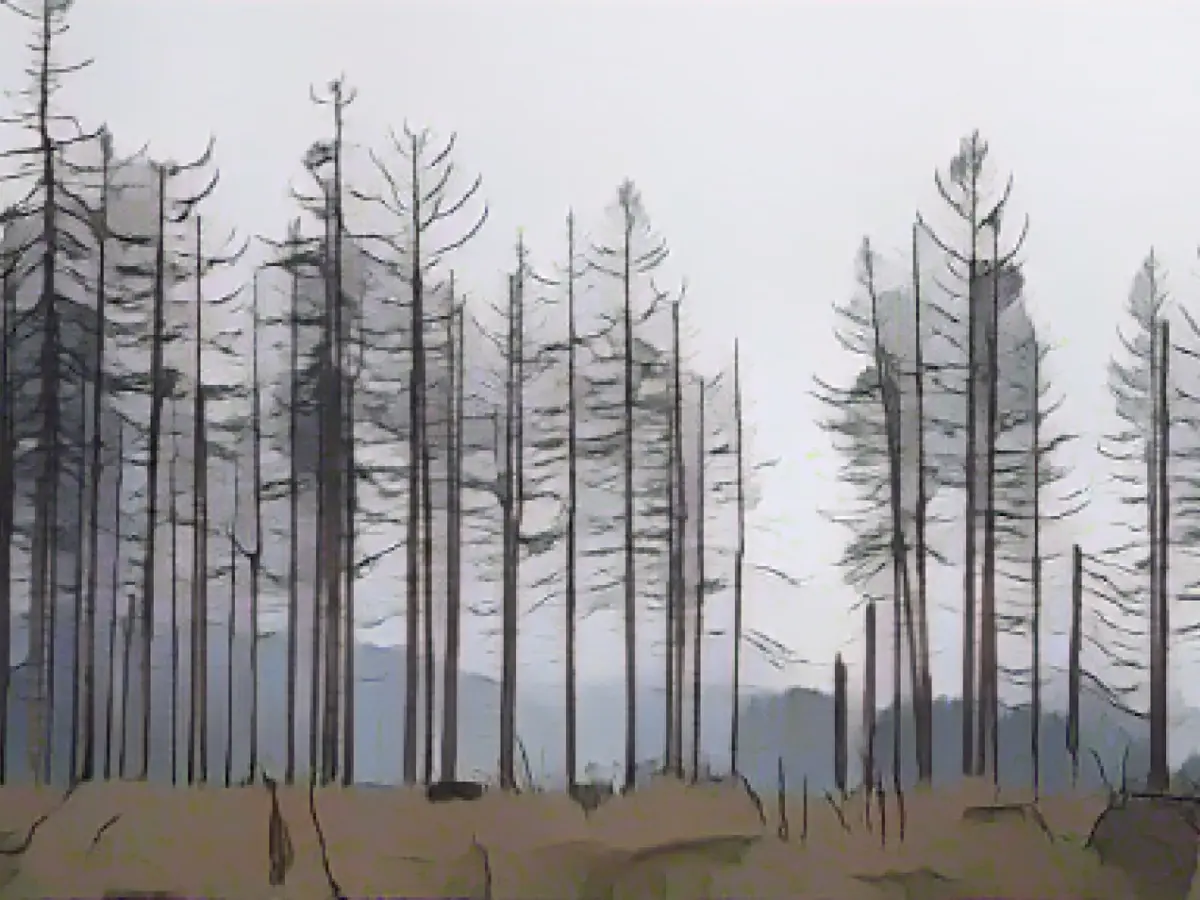Environment - State of the forests causes concern
The state's forests are still in a bad way. "The forest in Lower Saxony is still in a very threatening condition", said Forestry Minister Miriam Staudte (Greens) on Friday in Hanover. "The proportion of severely damaged trees is more than twice as high as the long-term average - for the fourth year in a row," said Staudte, referring to the new forest condition report.
According to the ministry, this annual survey clearly shows the impact of several years of extreme weather on the country's forests. However, favorable weather conditions in 2023 prevented further deterioration. Although the past vegetation year was again very warm, there was also sufficient precipitation.
"We still have high dieback rates and a large crown thinning, which all indicates that the forest is not coping with the effects of the climate crisis," Staudte summarized. Crown thinning refers to a visible loss of needles or leaves in the tree crown. In recent years, spruce trees, for example, have died off across the board, especially in the Harz Mountains, said Staudte. This is now continuing in some other areas.
The Forest Condition Report has been published annually by the Northwest German Forest Research Institute and the Ministry since 1983. It is intended to document the impact on forests and forest soils caused by harmful substances, weather and climate change as well as insects and fungi that are harmful to forests.
For the Green Party politician Staudte, the clear consequence is to focus more on mixed forests again. It is about spreading the risk, because nobody knows what the climate will actually look like in 50 or 60 years' time and which tree species might be the best. In forestry, however, very long planning periods make decisions difficult.
With regard to the various tree species, the forestry experts describe the condition of spruce as the worst. Beech showed clear and oak slight reactions to the dry years. The least damage is seen in pine. The authors see the potential of native oak species as a small "ray of hope" for forestry cultivation. According to them, the adaptation possibilities of these tree species are probably not yet fully exploited.
With its results, the Forest Research Institute does not see the forest as a great helper on the way to more climate protection. They have already suffered too much from climate change for that. Ulrike Talkner from the research institute therefore pleaded on Friday in Hanover for climate change to be curbed as much as possible in order to protect the forest and maintain its function as much as possible.
Just a few days ago, the forest soil was named "Soil of the Year 2024" as an important foundation for the forest. This was an initiative of the Thünen Institute of Forest Ecosystems and the Soil of the Year Board of Trustees of soil science associations to mark World Soil Day (December 5).
Forest soils are not only important for trees, but also play an important role for the biodiversity of living organisms. "They are also an important carbon store," the Federal Research Institute for Rural Areas, Forests and Fisheries (Thünen Institute) explained.
Read also:
- A clan member is punished here
- Traffic lawyer warns: Don't talk to the police!
- Will he be convicted as Jutta's murderer after 37 years?
- He also wanted to kill his cousin
- Miriam Staudte, the Forestry Minister in Lower Saxony, expressed concern about the state of the forests in Hanover, stating that the proportion of severely damaged trees is higher than the long-term average due to climate change.
- Staudte also mentioned that the Forest Condition Report, published annually since 1983, documents the impact of harmful substances, weather, climate change, and insects on forests in Lower Saxony.
- The report highlights the worst condition of spruce trees and a slight reaction in oak trees, suggesting that adapting to mixed forests and native oak species might be beneficial for future forestry policies to cope with climate change.
- Ulrike Talkner from the Northwest German Forest Research Institute emphasized the need to curb climate change as much as possible to protect the forest and maintain its function as a carbon store.
Source: www.stern.de








